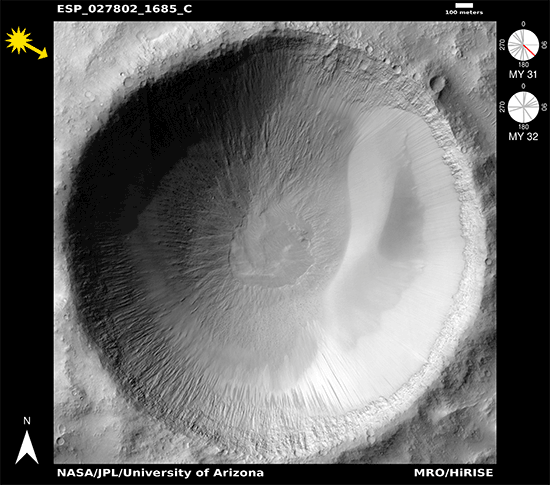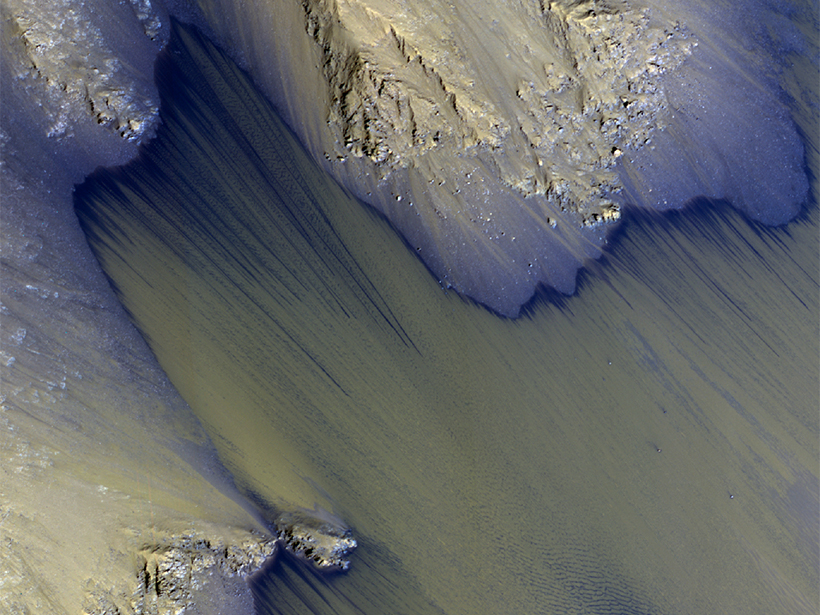Source: Journal of Geophysical Research: Planets
One of the most significant discoveries revealed by the Mars Reconnaissance Orbiter mission is the presence of seasonal, flowlike markings known as recurring slope lineae. Previous studies show that these features recur and grow longer during the warmer seasons and fade away during cooler times. Also, they occur most frequently on steep slopes facing the Sun.
These findings are consistent with the idea that near-surface liquid water can be found on Mars today. Despite important implications for the history and habitability of Mars, however, the mechanism by which these lineae form—and the source of this purported liquid water—remains an open question.

Now Chojnacki et al. report the most abundant and densest concentration of recurring lineae discovered on the planet’s surface to date. By comparing repeat images taken by the orbiter’s High Resolution Imaging Science Experiment (HiRISE), the researchers found widespread evidence of the markings in multiple geologic settings in the Coprates and Melas chasms in Valles Marineris, a system of enormous canyons located along the Martian equator.
The researchers documented 31 lineae sites associated with a variety of geologic materials and settings, including craters, landslide escarpments, and possibly dunes. The majority of the recurring lineae, however, occur in the middle of the canyon walls. These observations indicate that the mechanism and/or conditions responsible for creating these features are much more widespread and dynamic in these locations than in previously reported settings.
Assuming that the recurring lineae are formed by subsurface water, the minimum volume necessary to create all of the HiRISE-detected sites during one Martian year is 7–12 Olympic-sized swimming pools, according to the team’s calculations. Because many of the lineae are clustered near topographic high points, such as ridge crests, where groundwater or fluid from the seasonal melting of subsurface ice is unlikely to reach the surface, the researchers conclude that a more widespread process—like the absorption of moisture from the atmosphere by salt—is a more likely source of this water.
The results of this study add further support to the idea that Mars currently hosts significant volumes of near-surface water, a finding with important implications for unraveling the planet’s biologic and climatic histories, as well as for selecting a potential landing site for a crewed mission to Mars. (Journal of Geophysical Research: Planets, doi:10.1002/2015JE004991, 2016)
—Terri Cook, Freelance Writer
Citation:
Cook, T. (2016), A cluster of water seeps on Mars?, Eos, 97, https://doi.org/10.1029/2016EO056059. Published on 25 July 2016.
Text © 2016. The authors. CC BY-NC-ND 3.0
Except where otherwise noted, images are subject to copyright. Any reuse without express permission from the copyright owner is prohibited.

